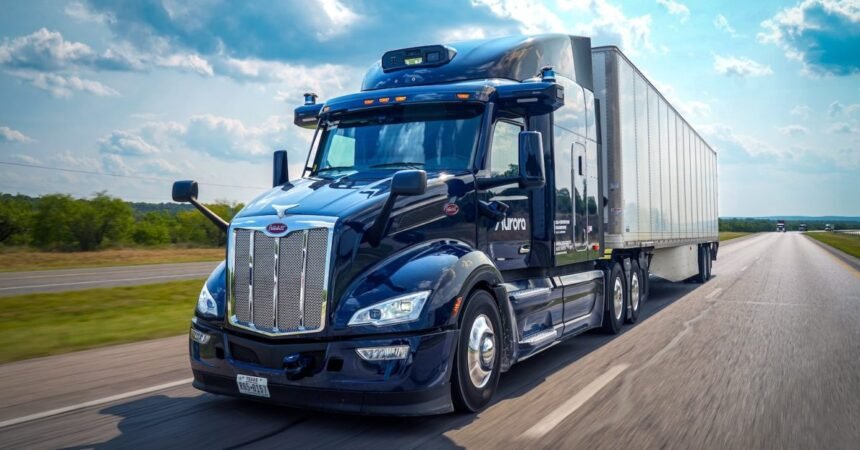Aurora, a Texas technology firm, recently made waves in the industry by launching the first fully autonomous freight service in the US. However, the celebration was short-lived as the company announced that human operators are back in control of its tech-boosted Peterbilt Class 8 semi trucks. This decision was made in response to pressure from the truck manufacturer’s parent company, PACCAR, who requested a human operator be present due to certain prototype parts in their base vehicle platform.
In a blog post by Aurora CEO, Chris Urmson, he explained the decision to reintroduce human operators, stating that partnerships with industry stakeholders are crucial for delivering a safe and scalable commercial product. While Aurora is confident that a human operator is not required for safe operation based on extensive testing and analysis, they respected PACCAR’s request and placed an observer in the front seat, with the Aurora Driver remaining responsible for all driving tasks.
This development coincides with Texas State lawmakers reviewing House Bill 4402, which would mandate trained human operators in autonomous vehicles, effectively banning fully self-driving semi trucks in Texas. The Teamsters Joint Council 80 in Dallas, Texas, supports this bill, emphasizing the importance of protecting jobs in the trucking industry from automation.
Despite the push towards autonomous technology to address the ongoing driver and equipment operator shortage, some believe that investing in operator salaries could be a more sustainable solution. With CEO pay in the industry increasing significantly compared to operator salaries, there is a growing concern about the impact of automation on jobs and livelihoods.
In conclusion, while the advancement of autonomous technology in the trucking industry is promising, the debate over the role of human operators and the potential impact on jobs continues. Aurora’s decision to reintroduce human operators reflects the complex nature of integrating autonomous systems into commercial operations while balancing safety, efficiency, and workforce considerations.
(Source: Aurora)







